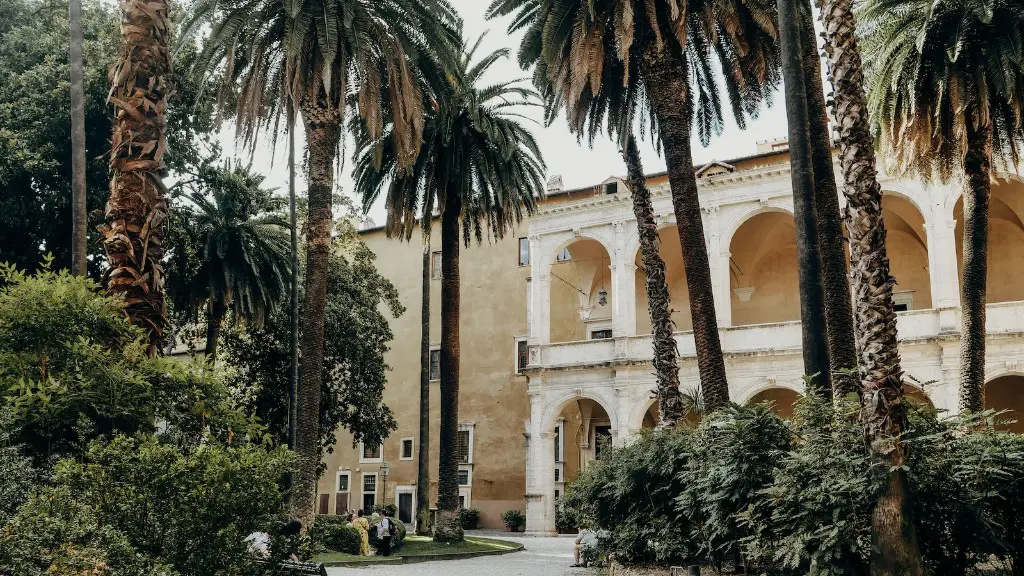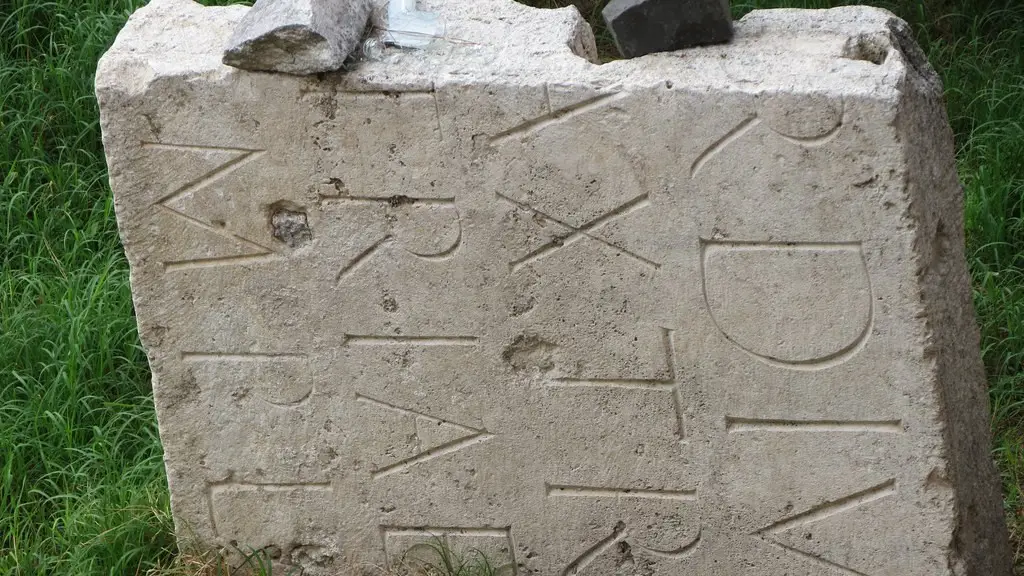In the ancient times, Rome was a small-scale city, with estimates of population ranging from 100,000 to 250,000 in the 1st Century BC. The total size of ancient Rome was also much smaller. It has been estimated that the approximate area under the city’s control was about 660 square kilometers.
The Roman civilization rose to become one of the most prosperous and influential empires in the ancient world. Rome reached a population peak of around one million at the height of its power. This was made possible by the vast territory the Romans conquered and brought under their control. People from all over the world migrated to Rome, bringing with them new cultures and religions which further enriched the city’s character.
As Rome grew in size, power and prosperity, its buildings and monuments became larger and grander. We can still see much of this ancient grandeur manifested in Rome’s architecture today. The Pantheon and the Colosseum are just two of the structures which stand as a testament to the Romans’ architectural achievements.
The population of Rome decreased during the decline of the Roman Empire. By the 4th century AD, its population had been reduced to around 20,000. This low population meant that the size of the city also decreased, with estimates ranging from 140 to 300 square kilometers.
The city of Rome was revitalized in the late Middle Ages and early Renaissance. This period saw its population increase to levels not seen since the height of the Roman Empire. The city had an estimated population of 200,000 by the mid-16th century and its size had increased significantly to just over 370 square kilometers.
Rome transformed itself into a modern city from the 18th century onward. Urbanization drastically increased its population and size. By the modern era, Rome became one of the largest cities in Europe, with a population of about three million and an area of about 1,285 square kilometers.
Trade in Ancient Rome
Most of the goods that were necessary for life in ancient Rome were purchased through trade. The Romans traded both locally and on a more international scale. To protect its trading interests, ancient Rome sent its legions across the sea to places what we would now call Britain and Spain. These legions carried goods and coins as payment for goods in exchange. It was not uncommon for Roman legions to transport goods such as grain and fruit over long distances.
The trade of goods was not the only form of commerce in Ancient Rome. Services such as banking and construction were also offered. The banking system was very well organized and widely used. In addition, money lending was a very common activity and moneylenders could be found all over Rome.
For the transport of goods, the ancient Romans had a number of roads leading to major trading cities. The roads were mostly built using stone and were very well maintained. There were also several rivers which served as major transport routes for the transportation of goods. Ships, carts, and even animals were used for transporting goods on the rivers.
Language in Ancient Rome
The language of Ancient Rome was Latin. Latin was spoken by all citizens of Rome, from the wealthy and educated to the poorest and most illiterate. Latin evolved from an assortment of languages spoken by the diverse peoples of Rome’s ancient territories. Over time, Latin became the common language and the predominant language of the Roman Empire.
Throughout its existence, Latin has served functional, political, and popular roles. It was the language of law, politics, religion, science, poetry and literature. Latin enabled the spread of Roman culture, trade and technology to the far reaches of the ancient Mediterranean world.
However, Latin was not the only language spoken in Ancient Rome. The languages of conquered and incorporated peoples were also spoken. For example, in the eastern parts of the empire, the lingua franca was Greek. Hebrew, Aramaic, and Egyptian were also spoken.
Religion in Ancient Rome
Roman religion was a combination of various beliefs and practices which changed over time. The early Romans followed an animistic religion that was specific to their individual villages and did not follow a unified pantheon as we understand it today.
From around the 6th century BC, Rome began to incorporate foreign gods and goddesses and adopted the pantheon of the Ancient Greeks. As Rome gained power, they absorbed and integrated the gods of the various cultures they conquered.
The Romans believed that the gods and goddesses had to be worshipped and appeased in order to ensure their good will and the blessings of heaven. The Roman religion focused on rituals, offerings, ceremonies and festivals to honour the gods and goddesses.
Government in Ancient Rome
Ancient Rome was an authoritarian and monarchy for most of its existence. Rome was initially founded as a monarchy, with a king and a senate. This system was overthrown in 509 BC and replaced with a republican form of government.
The republican government was divided into two branches, the senate and the non-senatorial nobles. The senate was composed of patricians, the non-senatorial nobles were composed of plebeians. The senate had the power to make laws and the non-senatorial nobles had the power to approve or veto the laws.
The Roman government also had a number of magistrates, or officials, with different levels of authority. The most powerful were the consuls, two annually elected officials who were responsible for leading the government and the army.
The Roman military was an important part of the government. It was composed of citizens who could serve up to 16 years before returning to civilian life. The military was responsible for protecting Rome and its citizens and was used to expand the empire and conquer new territory.
Technology in Ancient Rome
The ancient Romans were very familiar with technology and were skilled in its use. They had a vast array of mechanical engineering, from water mills to complex siege engines.
Two technologies that were crucial in the development of Roman civilization were engineering and architecture. Roman engineers had a deep understanding of mathematics and geometry, which enabled them to construct bridges, aqueducts, roads, and other structures with great accuracy.
Ancient Roman architecture was also very impressive. They built stunningly beautiful and sophisticated buildings which demonstrate the sophistication of their craft. This includes the Pantheon, which is still the world’s largest unsupported dome, the Colosseum, and other remarkable structures.
The Romans were also adept at the development of weapons and siege machines. Their designs were effective and made them formidable adversaries in battle. Roman engineers were also pioneers in the development of the catapult and were the first to make effective use of it.
Culture in Ancient Rome
The culture of Ancient Rome was a blend of many influences. It drew on the cultures of the Greek and Etruscan peoples, which were the predecessors of the Romans. Roman culture also reflected the influence of the diverse peoples that the Roman Empire had conquered and absorbed.
In terms of language, literature, art and architecture, the Romans reached a high level of sophistication. The literature of Ancient Rome included works from authors such as Virgil, Horace and Ovid, who are still studied and appreciated today.
The Romans embraced art in many forms. The most prominent form of art was mosaic, which decorated many of their public spaces. They also built many theatres and amphitheatres, which were used for both plays and gladiatorial contests.
The theatre allowed Roman citizens to express themselves and their culture in the form of drama. As for music, the Romans enjoyed singing, dancing, and playing a variety of instruments. They even had their own system of musical notes, which evolved over time.

